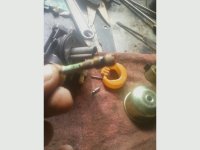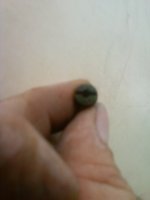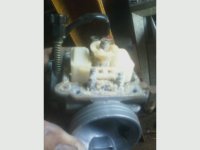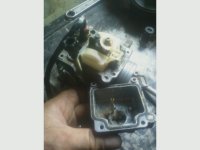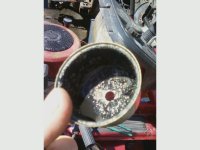I just love e-10 gas. It's milk shake brings the boys to my yard. ( You either get that, or you don't). LOL. Whenever I get, "I don't know, it ran fine last year, now it just won't start", the first thing I do is dump the fuel, completely, clean the plug, and try with my mix. Premium, non Ethanol, with a splash of SeaFoam. Sometimes, that's all it needed to run, and the SeaFoam in the fuel will clean out some of the junk that the E-10 fuel left in the system. By no means a perfect solution, but, if all they want is for it to run, it's a viable alternative to a tear down. You can't put $100.00 worth of labour into a $125.00 piece of equipment. Sometimes, it's time to completely disassemble the carb, run it through an ultrasonic bath, and try again. Sometimes.. it just needs a new carb.
Even with Premium non Ethanol fuel, with SeaFoam as a stabiliser, I still adhere to the 60 day rule. More than 60 days, and it gets tossed out. Necessary? Probably not, but to remove a variable in a no start scenario, it's not worth dicking around with questionable fuel on a customer service, time is money.. . 4 Ski-doos, 3 ATVs' , 2 snow-blowers .. nothing but Premium, Ethanol free.. For the extra 20 cents a litre, it's worth the peace of mind. Got a 1996 Honda Foreman 400 that starts on the first spin. Never had the carb apart, and I'd like to keep it that way.
Big difference too, between a fuel system that's vented ( Lawn mower, snow blower.. stuff with a vented cap), and non vented ( Chain saw, weed whacker, etc.). A vented fuel system "breathes", a lot more air through the system. A lot more. Phase separation occurs when the Ethanol has absorbed all the water that it's attracted, and then continues to attract more moisture. That's when the hurt begins.
I completely agree that newer stuff is built to withstand Ethanol in the fuel ( lines, gaskets, seals, etc),.. But, nothing is meant to withstand the caustic effects that occur, when the fuel has absorbed all that it can, and phase separation trashes the internals of the carb.


